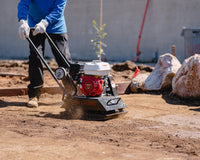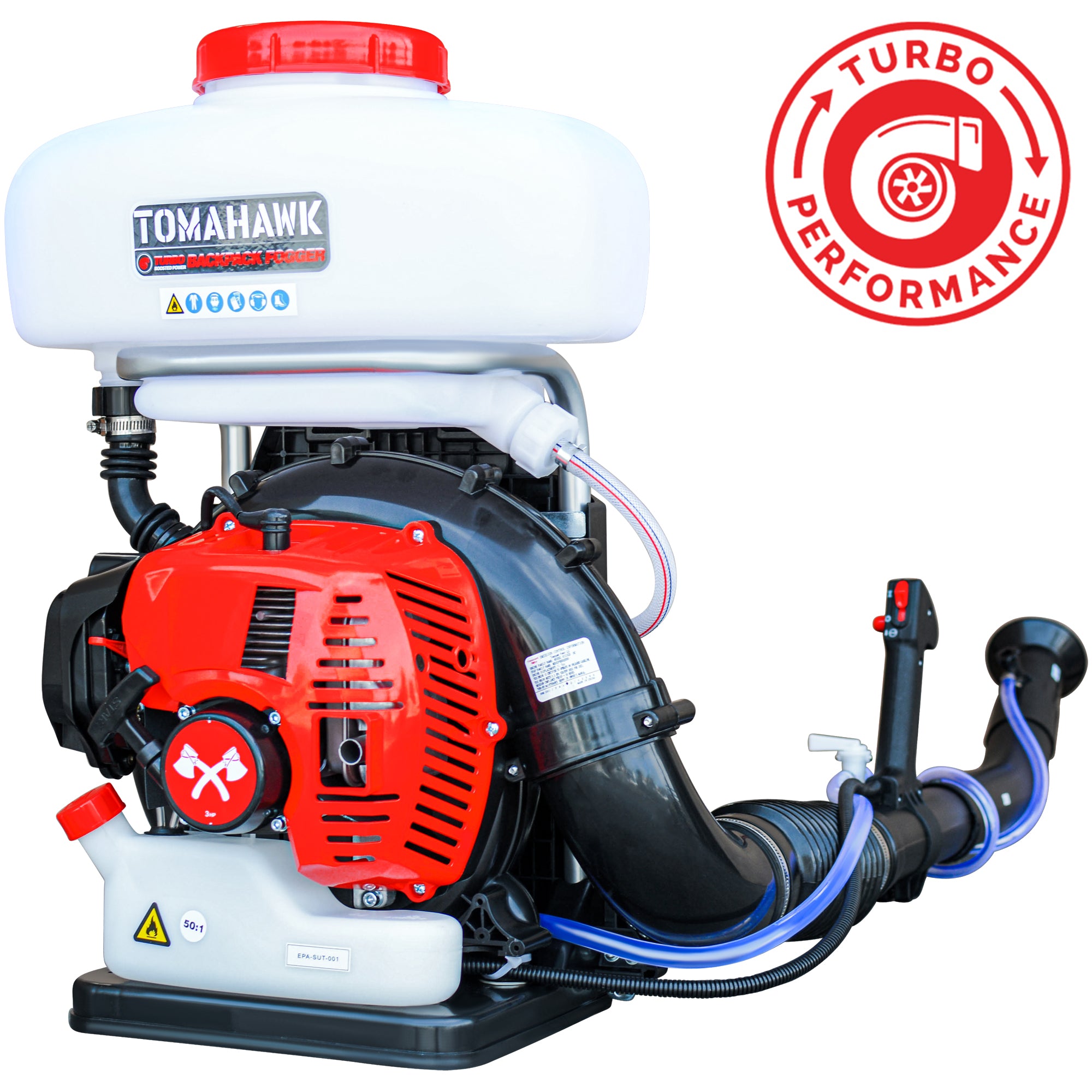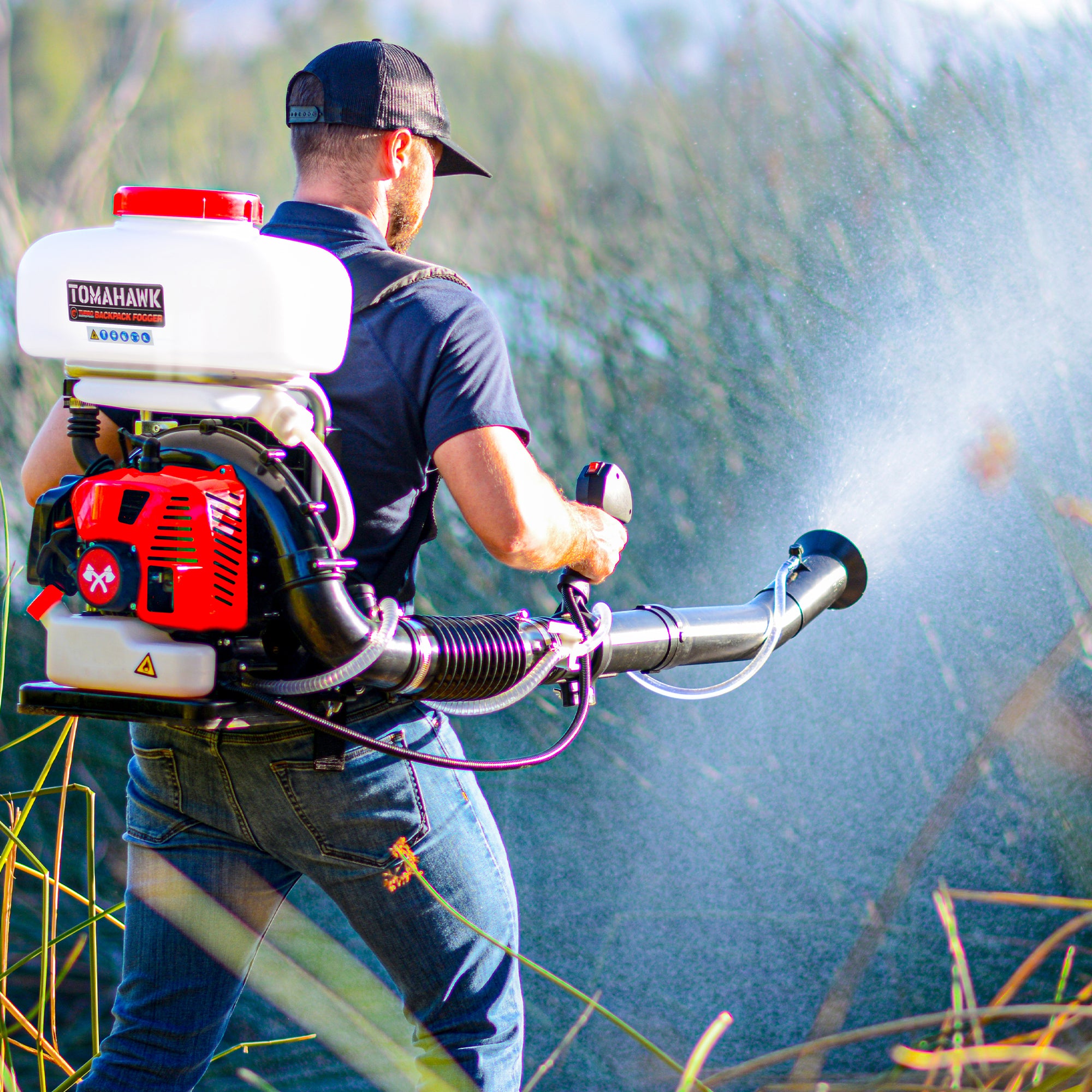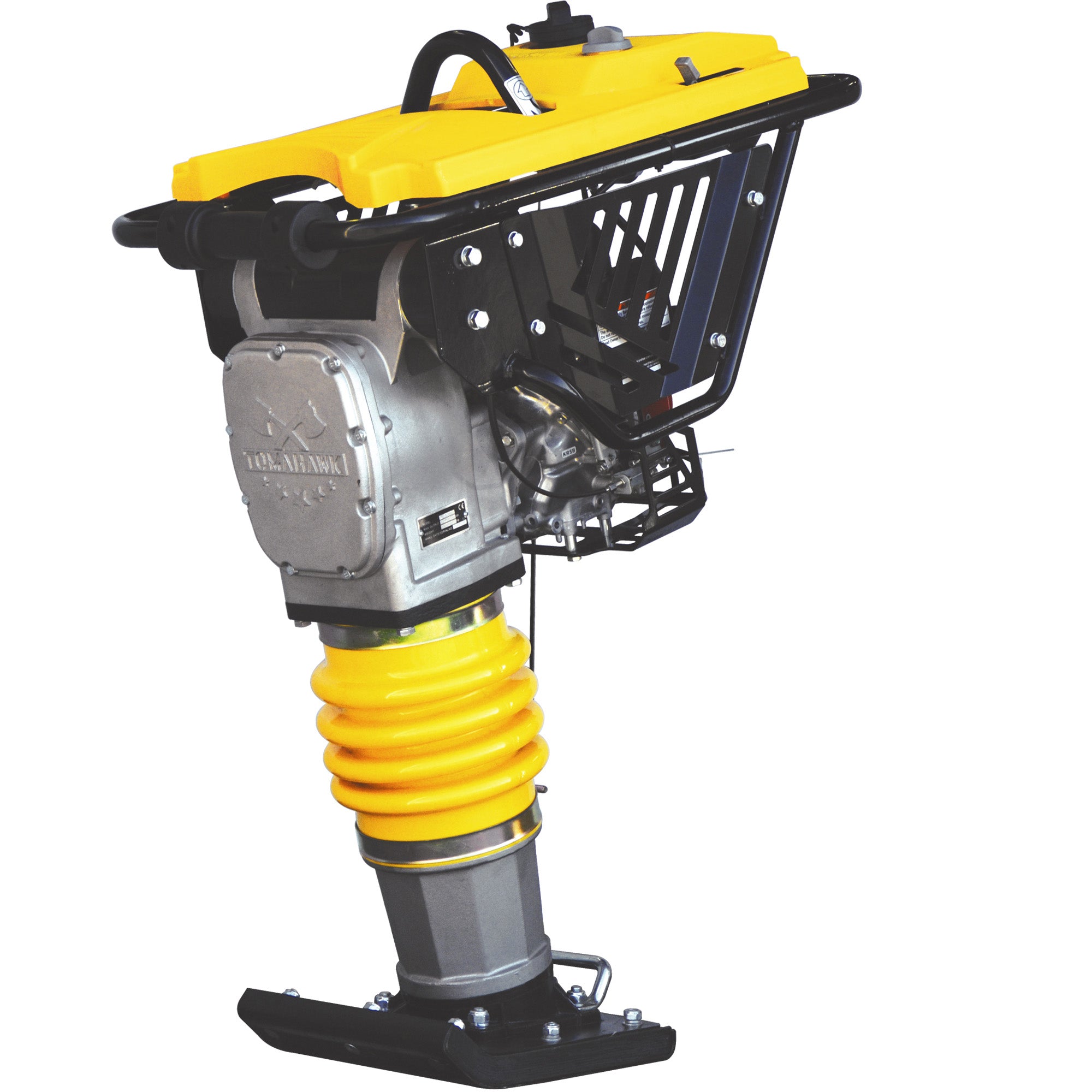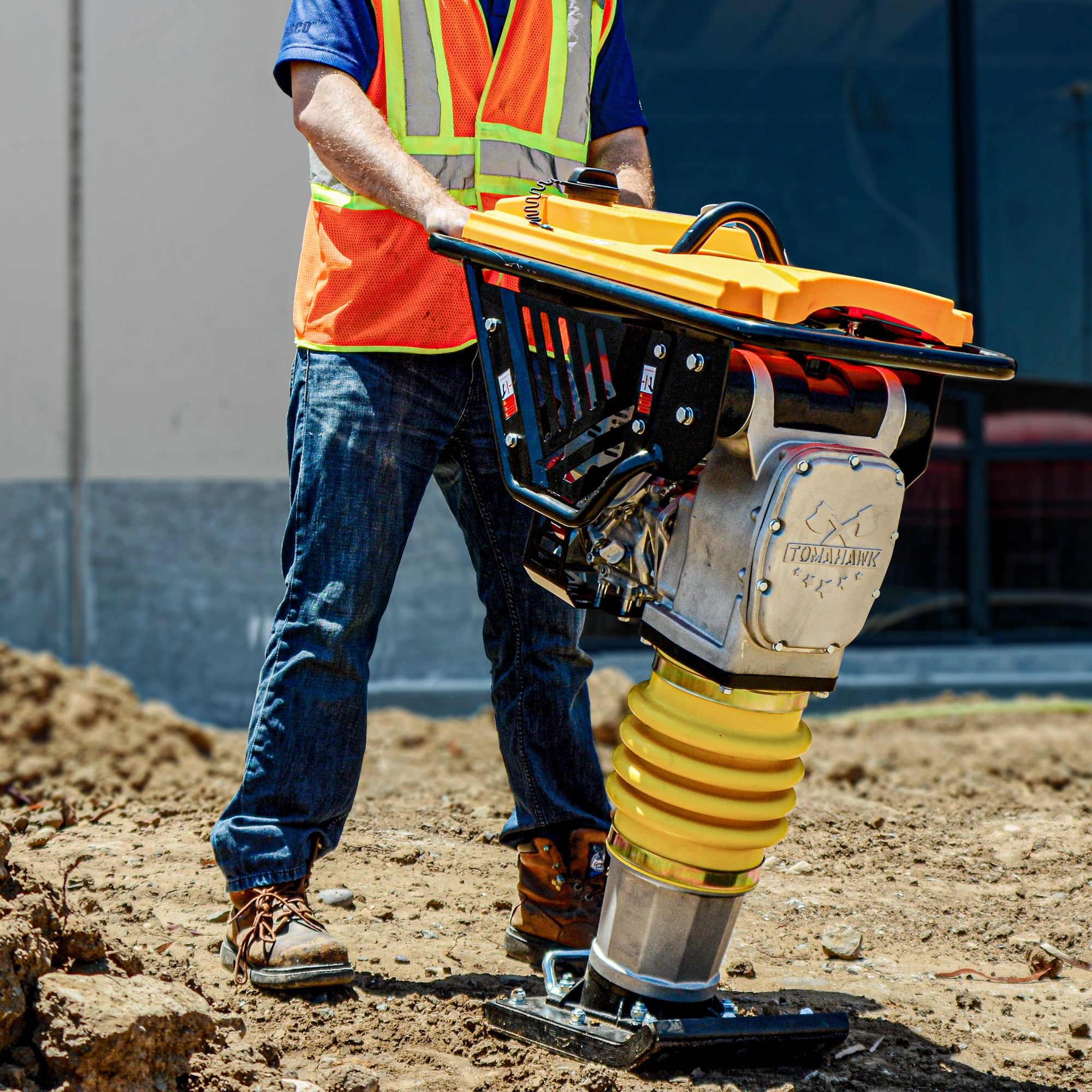Articles
Choosing the Right Welding Technique for Trailer Gate Latches
When installing or repairing a trailer gate latch, selecting the right welding method is key to ensuring both strength and durability. Trailer latches endure heavy use, frequent vibrations, and outdoor exposure—making the quality of the welds critical for long-term performance. With various welding techniques available, it can be challenging to know which one is best suited for this task. In this guide, we’ll compare the most common welding methods for trailers—specifically MIG and stick welding—and discuss how proper surface preparation, supported by Tomahawk’s heavy-duty equipment, can make all the difference.
Essential Safety Gear for Welding Trailer Gate Latches: Safety First, Always
Welding a trailer gate latch is a small but significant job that demands precision, preparation, and most importantly—personal safety. The act of welding exposes workers to high temperatures, UV radiation, sparks, and flying debris, all of which pose serious hazards without the right protective equipment. Whether you’re a seasoned welder or a DIY enthusiast handling a trailer upgrade, outfitting yourself with proper welding safety gear is not optional—it’s essential. This guide will walk you through the critical safety equipment you need and how Tomahawk’s tools can streamline surface prep to make the entire process safer and more effective.
Preparing the Work Area for Trailer D-Ring Welding: A Step-by-Step Guide
Welding D-rings onto a trailer is a common upgrade that improves cargo security and expands hauling capabilities. However, before striking an arc, it’s essential to prepare your work area properly. A poorly prepared space can lead to weak welds, contamination, or even safety hazards. Whether you’re working in a professional garage or a home workshop, organizing and cleaning the welding zone will ensure that your project is efficient, effective, and safe from start to finish. In this guide, we’ll cover key setup steps, safety considerations, and how to use Tomahawk’s equipment to streamline your workspace preparation.
Maintaining and Inspecting Welded Trailer D-Rings: Essential Tips for Long-Term Safety
Welded trailer D-rings are essential for securing loads and ensuring transport safety, especially for heavy-duty applications. Once these rings are welded onto a trailer’s frame, proper maintenance becomes crucial—not only for the safety of the cargo but also for the integrity of the trailer over time. Whether you’re a professional hauler or a weekend warrior, understanding how to inspect and maintain welded D-rings can prevent accidents, extend trailer life, and reduce repair costs. In this post, we’ll break down key inspection routines, common wear indicators, and how professional-grade cleaning equipment from Tomahawk Power can play a supporting role.
Common Mistakes to Avoid When Welding Trailer D-Rings
Securing trailer D-rings through welding is a crucial step for anyone who hauls heavy loads. These tie-down points often bear extreme stress during transport, so getting the welds right is more than just a matter of aesthetics—it’s about safety and function. Yet, many DIYers and even some professionals overlook essential details that can lead to weld failure, structural damage, or premature wear. Below, we examine key mistakes to avoid when welding trailer D-rings and how thoughtful preparation, aided by the right tools, can make all the difference.
Welding Trailer D-Rings: Choosing the Right Technique for Secure Results
Attaching D-rings to a trailer frame is a common project for those who haul cargo, equipment, or vehicles. These anchors endure significant force, so ensuring strong, reliable welds is essential for both safety and durability. Selecting the appropriate welding technique isn’t just about convenience—it directly impacts how long your welds hold under stress. In this article, we’ll compare popular welding methods and explain how proper surface preparation, with help from Tomahawk tools, enhances welding success.
Safety Gear You Need Before Welding Trailer D-Rings
Welding trailer D-rings is a practical upgrade for anyone who needs reliable tie-down points. However, the strength of your welds is only as good as the preparation—and safety measures—you take before striking the arc. From PPE to surface preparation, this guide will walk you through the essential safety gear required for welding trailer D-rings correctly and securely.
Preparing the Work Area for Trailer Welding
Before striking an arc, it’s crucial to prepare your work area properly. Trailer welding demands not only skill and the right equipment, but also a well-organized and hazard-free environment. Whether you're building a trailer from scratch or making structural repairs, your workspace can significantly impact weld quality and safety. This guide covers essential steps to optimize your welding area, while also introducing supportive tools like floor scrubbers that contribute to a smoother, cleaner operation.
Maintaining and Inspecting Welded Trailers
A properly welded trailer can offer years of dependable service, but its longevity hinges on consistent inspection and maintenance. Once the fabrication is complete, neglecting structural health or failing to clean and care for the frame can compromise safety and performance. Whether you're hauling equipment for work or transporting materials for a DIY project, regular upkeep is vital to preventing costly failures on the road or at the jobsite.
Common Mistakes to Avoid When Welding Trailers
Welding a trailer is more than just joining metal—it’s about ensuring safety, strength, and long-term reliability under constant mechanical stress. Whether you're fabricating a utility trailer from scratch or repairing a cracked frame, overlooking certain steps or cutting corners can lead to structural failure or costly do-overs. Below are the most common welding mistakes seen in trailer construction, along with professional guidance to help you avoid them.
Choosing the Right Welding Technique for Trailer Frames
Welding a trailer frame demands not only strength and stability but also the right technique for lasting performance. Whether you’re building a new trailer or repairing an existing structure, the welding method you choose will directly impact the trailer’s load-bearing capability and long-term durability. Understanding the differences between popular welding techniques and ensuring proper surface preparation is key to a safe and professional result.
Essential Safety Gear for Trailer Welding Projects
Trailer welding projects demand precision, durability, and most importantly, a firm commitment to safety. Whether fabricating a utility trailer from scratch or repairing an existing frame, welding exposes users to hazards like high temperatures, ultraviolet radiation, and flying metal debris. Investing in the right safety gear and tools not only minimizes risk but also improves the quality of your work.
Common Mistakes to Avoid When Welding Fence Clips
Welding fence clips may appear straightforward, but subtle errors during setup and execution can compromise the structural integrity of your entire fencing system. Whether you're installing new clips or repairing existing ones, attention to detail in the welding process is key. For professionals and DIYers alike, understanding common mistakes—and how to avoid them—ensures safer, longer-lasting welds and cleaner fence lines.
Maintaining and Repairing Welded Fence Clips
A well-welded fence clip ensures long-term stability and structural performance in any fencing system—whether it secures agricultural mesh, industrial barriers, or residential enclosures. However, the integrity of these clips can degrade over time due to weather, ground movement, or mechanical stress. Proactive maintenance and proper repair techniques are critical to preserving both safety and aesthetics. By routinely inspecting and servicing fence clips, you can avoid costly full replacements while maintaining consistent performance.
Preparing the Ground for Fence Installation
A successful fence installation begins well before any posts are set or panels are welded. One of the most overlooked yet critical steps in the process is proper ground preparation. Whether you're installing a residential boundary or a commercial security fence, uneven or poorly prepared terrain can compromise both the durability and aesthetics of your project. Ensuring a stable and level base not only improves structural integrity but also saves time and labor during the build phase.
Choosing the Right Welding Technique for Fence Clips
Attaching fence clips to metal posts may seem like a minor component in fencing projects, but it plays a crucial role in the structural integrity and longevity of the installation. A poor weld can compromise the entire fence line, while a solid connection ensures that mesh panels or wire fencing stay secure under stress and weather exposure. Choosing the right welding technique for this task depends on several factors, including the environment, material thickness, available equipment, and your level of welding expertise.
Essential Safety Gear and Tools for Welding Fence Clips
Welding fence clips may seem like a straightforward task, but it requires strict adherence to safety protocols to protect yourself from serious injuries. Every welder, regardless of experience, must use comprehensive personal protective equipment (PPE) to minimize risks associated with exposure to high temperatures, UV radiation, and flying metal debris. Welding gloves made of flame-resistant leather, long-sleeved jackets, and non-flammable pants are basic essentials. Additionally, protective footwear and hearing protection should be included in every setup.
Common Mistakes to Avoid When Welding Mesh Fence Panels
One of the most critical steps in welding mesh fence panels is ensuring the contact surfaces are clean, level, and free of corrosion or debris. Skipping this step can compromise weld strength and lead to premature failures. Dirt, rust, or old paint can interfere with weld penetration, causing weak joints. Before beginning any welding work, it’s essential to clean and prep the area thoroughly. In some cases—especially when working with aged posts or when replacing panels—aggressive surface prep may be necessary. Here, using a demolition tool like the Tomahawk 35 lb. Electric Demolition Jack Hammer can help remove concrete build-up, weld spatter, or embedded metal anchors that obstruct clean connections.
Professional Guide to Maintaining and Repairing Welded Mesh Fences
Welded mesh fences are valued for their durability, visibility, and minimal maintenance requirements. However, like any outdoor structure, they are subject to wear from the elements, physical stress, and age. Maintaining and repairing mesh fencing properly not only extends its lifespan but also preserves its appearance and structural integrity. With the right approach and tools, keeping your fence in good shape is straightforward and cost-effective.
Preparing the Ground for Mesh Fence Installation: A Practical Guide
Installing a mesh fence begins long before the welding torch touches metal. One of the most critical phases of the process is preparing the ground to ensure the panels stand straight and last long. Without a level and clean base, even expertly welded mesh panels may fail to align or hold up over time. That’s why understanding ground preparation is essential for a successful fencing project.
Choosing the Right Welding Technique for Mesh Fencing
Mesh fencing offers durability, visibility, and versatility for property lines, animal enclosures, and construction sites. However, ensuring a solid, lasting bond between the mesh and posts depends heavily on selecting the right welding method and preparing the materials correctly. This article explores the pros and cons of popular welding techniques for mesh fencing and how tools like those from Tomahawk can improve your setup and workflow.
Welding Mesh Fence Panels: Essential Tools and Safety Gear for a Successful Project
Welding mesh fence panels is a practical solution for creating durable, secure boundaries in residential, commercial, or agricultural settings. However, success in such a project depends not only on your welding technique but also on using the right tools and adhering to strict safety practices. Whether you're an experienced welder or a motivated DIYer, proper preparation and protective equipment are key to both quality and safety.
Post-Welding Maintenance for Tractor Buckets: Best Practices for Longevity and Performance
After successfully welding hooks onto your tractor bucket, the work isn’t over. Maintenance following welding is crucial to ensure the modifications remain safe, functional, and durable over time. Whether the bucket is used for lifting, hauling, or grading, a lack of post-welding care can lead to early deterioration, reduced performance, and costly repairs.
Common Mistakes to Avoid When Welding Hooks on Buckets
Welding hooks onto a tractor bucket is a practical upgrade for lifting, towing, or carrying tools and chains. However, while the process may seem straightforward, overlooking basic welding principles or skipping preparation steps can lead to poor weld quality, structural failure, or costly repairs. This article explores the most common mistakes made during this modification and offers actionable tips for achieving strong, lasting welds.
Reinforcing Tractor Buckets Before Welding Hooks
Before welding hooks onto a tractor bucket, it is essential to reinforce the metal surface to withstand heavy lifting and towing stress. Tractor buckets are subjected to intense forces during operation, and unreinforced welds on thin or worn steel can lead to structural failure. Whether you are adding grab hooks for chains or lifting rings for attachments, the preparation phase is key to long-term performance.
Essential Safety Gear for Welding Projects
Welding is one of the most powerful and versatile fabrication methods, widely used for projects like adding hooks to a tractor bucket. However, it also presents serious safety risks if the right protective measures aren’t taken. Whether you're a seasoned fabricator or tackling your first welding project, equipping yourself with the correct safety gear is non-negotiable. From head protection to flame-resistant clothing, here are the essentials to ensure your safety during every phase of the job.
Long-Term Solutions: Investing in Heated Driveway Systems
Winters can be unforgiving, especially when driveways become coated with layers of ice that compromise safety and access. While many homeowners rely on short-term fixes like salt and manual shoveling, there’s a growing interest in heated driveway systems—an investment in long-term convenience, safety, and property value. These systems use radiant heat technology to prevent snow and ice accumulation automatically, eliminating the need for constant winter maintenance.
Safety First: Avoiding Common Mistakes in Driveway Ice Removal
Winter weather brings more than just snowflakes and picturesque landscapes—it also presents serious safety risks when driveways turn into sheets of ice. Whether you’re a homeowner managing your own property or a maintenance professional clearing multiple sites, it’s essential to know how to remove ice safely and avoid common de-icing mistakes that can cause property damage or injury. Below, we outline some of the biggest pitfalls in driveway ice removal and share practical advice for doing it right.
Comparing De-Icing Products: What Works Best for Your Driveway?
As winter settles in, homeowners face the common challenge of keeping their driveways clear and safe. While traditional rock salt remains a popular choice, many alternatives have emerged that offer better performance, reduced environmental impact, and improved safety for pets and vegetation. This guide compares the most commonly used de-icing products and explains how the right tools—like those from Tomahawk Power—can improve their application and efficiency.
Preventing Ice Formation: Tips for Keeping Your Driveway Clear
During winter, icy driveways can be more than an inconvenience—they pose serious safety risks for both pedestrians and vehicles. While de-icing after a freeze is common, the best approach is to stop ice from forming in the first place. Proactive winter driveway care minimizes risks, reduces long-term damage, and cuts down on labor. This article outlines proven ice prevention strategies and suggests how the right equipment can help you stay ahead of winter conditions.



